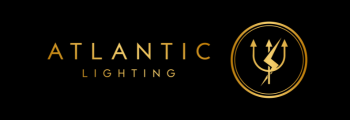Hardscape Lights and Why You Should Use Them

SET THE MOOD WITH AMBIENT DECK AND PATIO LIGHTING
With a deck or patio, the first thing to attend to are steps and edges that could be potential safety hazards. Lighting these areas allows easier movement around the space and creates a good base for your lighting installation. Working from here, use accent lights to illuminate trees, shrubs, and other plant material around the deck or patio and create more indirect illumination for your outdoor space. Accent lights for water features and a downlight above the grill are great additions to a deck or patio lighting plan.
When working with decks and patios, fences, and retaining walls, many specialty lights can be useful in creating interesting lighting effects. Hardscaping lights can be inserted between patio paver or retaining wall blocks to provide illumination and create interest along the wall. Wall lights are small decorative fixtures that can be fastened to benches, fences, walls, or stairways to add a decorative flourish and provide light where needed.
With decks and patios, the key to a good lighting installation is to keep the lighting low and indirect. This keeps the safety hazards illuminated while providing a low-key atmosphere for socializing. It creates a great ambiance for social gatherings or for time with the family at the end of the day.
The Three Building Blocks of Hardscape Lighting
1. Steps
Lighting up steps accentuates the beauty of this feature and provides a safe, visible pathway at night. A simple LED brick light can be integrated in the riser of each step, or another way is to insert a hardscape light under the cap of each step.

2. Railings & Posts
Deck posts can be illuminated with a variety of deck post lights (e.g., half-moon lights), available in cast aluminum and cast brass. Another option is to highlight deck railings using hardscape lights hidden under the lip of the railing.
3. Sitting Walls
During construction, a 12V hardscape light can be integrated into a brick or stone wall. Hardscape lights are usually installed just underneath the top cap of a sitting or retaining wall, typically installed before the top cap is placed on the wall. You may need to ask the hardscape contractor to create a channel for your fixture wire run.
Kichler® hardscape lights are available in different sizes to match the size of your wall, with lengths ranging from 3" to 18.9".

Basic Tips
- Plan ahead: It’s much easier to design and install hardscapes and lighting simultaneously, as opposed to doing hardscapes first and lighting later, with no coordination. If you are working with a hardscape contractor, let them know where the lights need to go and work together to determine the wire routing.
- Find a partner: If you’re uncomfortable doing hardscape work, partner with a contractor. Introduce yourself, show them photos of your work, and let them know you are willing to work with them. An in-person meeting can leave a lasting impression and lead to much more work for you.
- Leave a little extra: When installing a hardscape fixture, leave yourself a little extra wire if possible. If you should ever have to service the light, you can unscrew it from the plate and pull it out. After servicing, you can feed the wire back into the wall.
FAQ
Q: What are hardscape lights?
A: Hardscape lights are outdoor lighting fixtures designed to enhance and illuminate various landscape elements, such as retaining walls, pathways, and other hardscape features.
Q: Why should I use hardscape lights?
A: Hardscape lights can greatly improve the aesthetics and functionality of your outdoor space. They can highlight architectural elements, create a welcoming atmosphere, and increase the safety and security of your property.
Q: How do I install hardscape lights?
A: Installing hardscape lights usually requires burying low voltage wiring and connecting the fixtures to a transformer. Hiring a professional electrician or landscape lighting specialist is recommended to ensure proper installation and safety.
Q: What are the different types of hardscape lights available?
A: There are various types of hardscape lights, including well lights, deck and step lights, wall lights, and walkway lights. Each type is designed to serve a specific purpose and provide different lighting effects.
Q: What are the best landscape lighting techniques to use with hardscape lights?
A: Some popular landscape lighting techniques that work well with hardscape lights include moonlighting, grazing, highlighting, and silhouetting. These techniques can create a dramatic and visually appealing outdoor lighting display.
Q: Can hardscape lights be used with a retaining wall?
A: Yes, hardscape lights can be installed along a retaining wall to highlight its texture and provide accent lighting. Wall lights and well lights are commonly used for this purpose.
Q: What are the benefits of using low voltage landscape lighting for hardscape projects?
A: Low voltage landscape lighting is energy-efficient, easy to install, and safe. It allows for greater flexibility in design and provides a softer, more subtle illumination for hardscape features.
Q: Are there outdoor lighting options apart from hardscape lights?
A: Yes, apart from hardscape lights, there are other outdoor lighting options available, such as path lights, spotlights, floodlights, and decorative string lights. These options can be combined with hardscape lights to create a comprehensive outdoor lighting scheme.
Q: What are some popular outdoor lighting brands known for their hardscape lights?
A: Some popular outdoor lighting brands that offer a wide range of hardscape lights include Kichler, Hinkley, Vista, and Lutron. These brands are known for their high-quality and innovative lighting fixtures.
Q: Can hardscape lights also add to the aesthetic appeal of my landscape?
A: Absolutely! Hardscape lights provide functional illumination and add a touch of beauty and elegance to your landscape. They can highlight the architectural features of your outdoor space and create a captivating ambiance.
- John Bottoms

